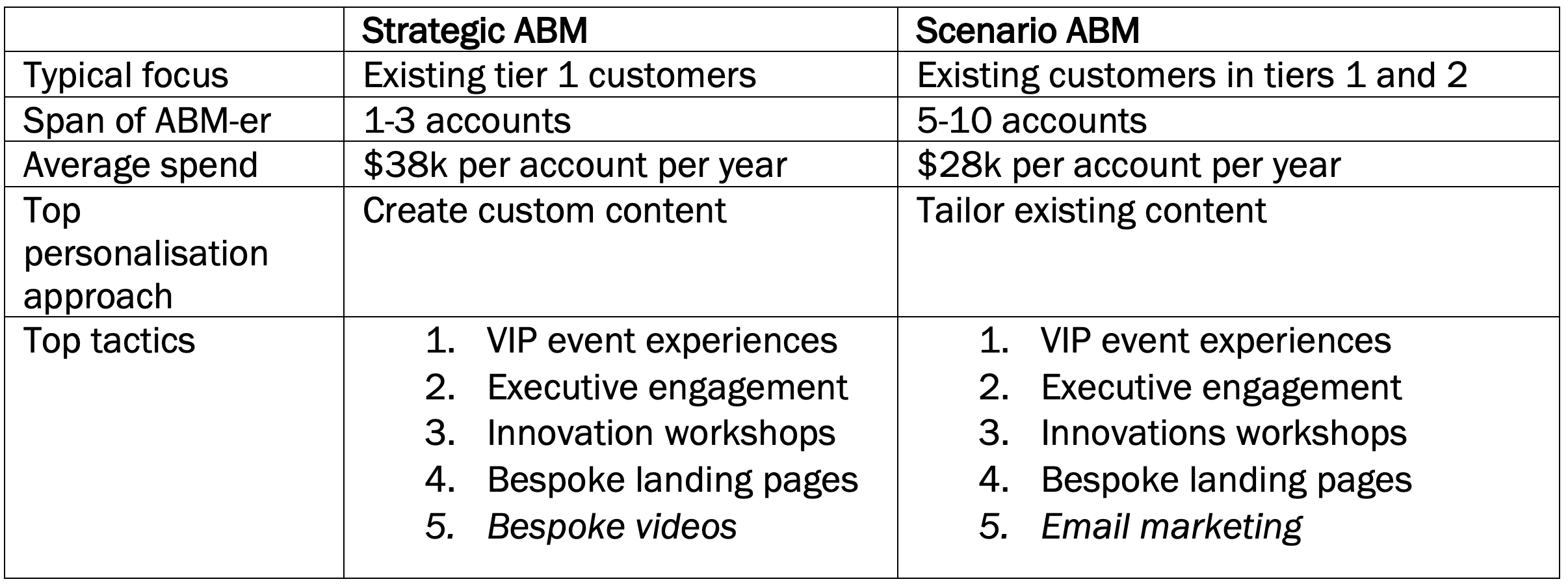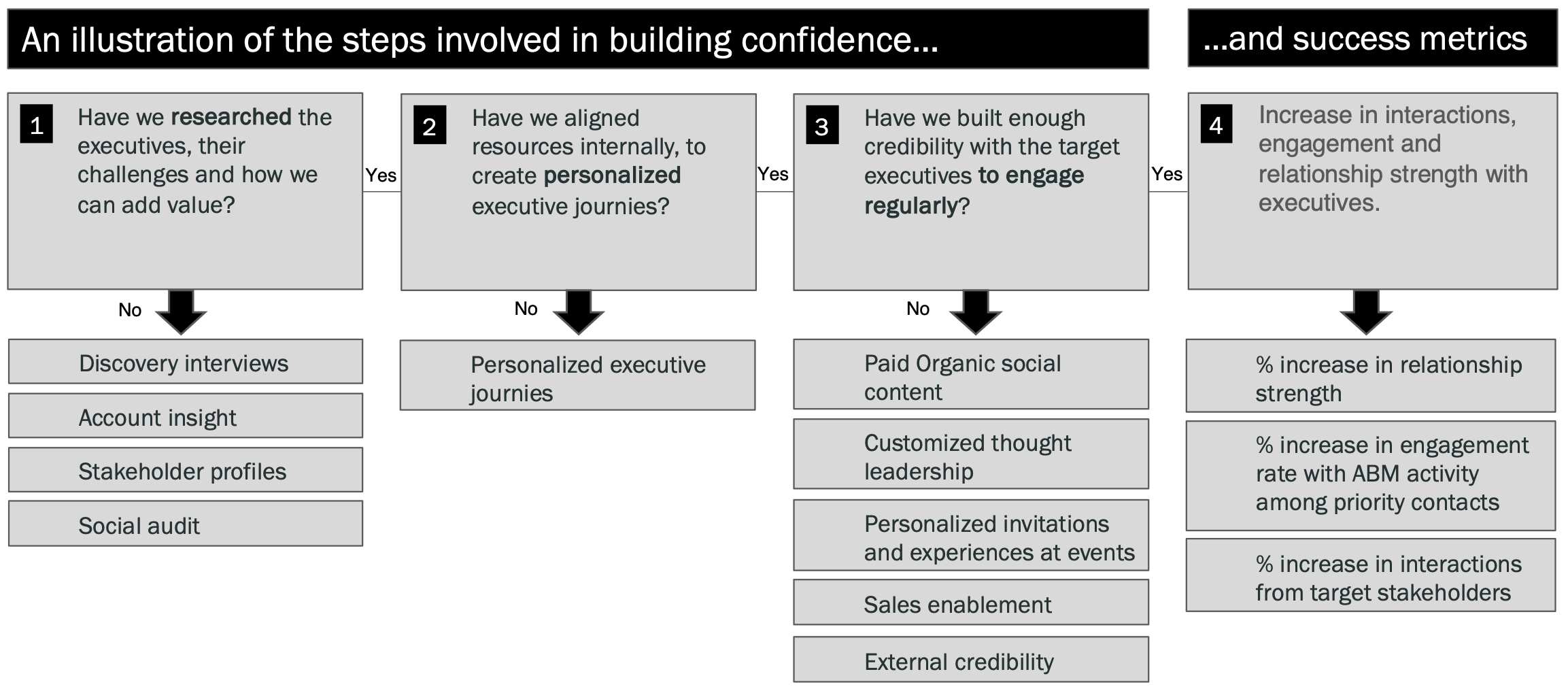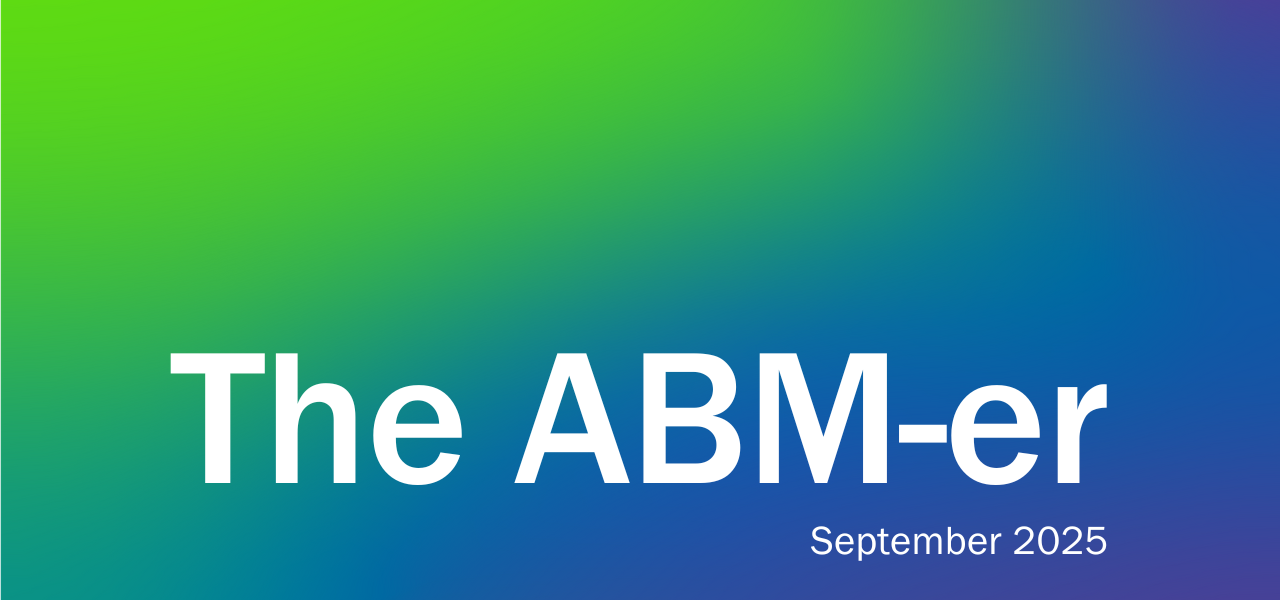To extend the power of Strategic (1-1) ABM across more accounts, some companies have introduced a lighter model, focused on driving pre-defined, specific outcomes through the customer lifecycle, such as breaking into a new buying centre or driving advocacy. Unlike in Strategic ABM, where you may be driving multiple outcomes through a comprehensive marketing plan, the scope of what is done for an account is reduced to a limited series of interventions to drive a specific outcome agreed with the account team.
Adopting Scenario ABM allows you to set clear expectations about what ABM can deliver – in language the business understands – while standardising on the best mix of tactics for driving specific outcomes. It improves alignment with sales, accelerates time to market and makes demonstrating impact much easier.
Here are some of the other ways it differs from full Strategic ABM.

Focusing on specific outcomes
It’s important to flag that this is not Segment or 1-Few ABM – it is still about creating an ABM plan for a single customer. The customers may not have anything in common: the commonality is within your business, in the scenarios that your account teams often find themselves in.
Here are some of the challenges account teams face, which marketing can help with in order to achieve specific business outcomes:
- Create advocates in the account (to demonstrate the value of our solution and win more work)
- Start a conversation with a new buying group (to break into in a different part of the account)
- Reposition us in the account (to break out of the box we’re in and demonstrate what else we could do for them)
- Develop stronger executive relationships (to build their confidence in us for more transformational solutions)
Here’s the guidance you might build for this last example, showing your ABM-ers what to do in this scenario and leveraging the tactics that you know have worked in the past.

Source: © Inflexion Group 2025. All rights reserved. Reproduced in ‘Account-Based Marketing: The definitive handbook for B2B marketers’ by Bev Burgess (Kogan Page, 2025) Chapter 6, Figure 6.7
The key thing to remember in Scenario ABM is that you are building your own version based on the common issues your account teams face and the tactics you know have worked in those situations.
Perspectives on how to make it work from Rhiannon Blackwell
When do you think it is appropriate to use this type of ABM?
To me it is particularly relevant for large companies and professional service firms that are selling such a wide variety of services and solutions to decision-makers across a whole organisation. The impact of Strategic ABM can be diluted if you’re trying to offer support across the whole breadth of an account. Scenario ABM can make sense where you want to focus on very targeted interventions or outcomes that will have the biggest impact on the overall growth of an account.
I think it also works well in environments where Strategic ABM is proving to be inefficient: for example, where you have accounts operating at a slower pace or liable to stall. Ringfencing finite resources for a select group of accounts can prevent you from pivoting support to where it is most needed at any given time. Scenario ABM enables you to have more of a sense-and-respond approach, ensuring you are prioritising resources, time and budget where they can have the most impact for the business.
What do you consider the main interlocks and dependencies?
It goes without saying that very tight sales and marketing alignment is critical, particularly due to the increased need to keep your finger on the pulse of changing business and client priorities across a broader portfolio of accounts. You also need a close relationship with your agencies to help you build the right engine in the background to help service those accounts. And then there are things like making sure the technology is in place or collaborating across marketing and the wider business to source content, to tap into campaigns and so on.
How would you advise ABM-ers to track and report on the impact they are having?
I think it’s also about being really clear on the outcomes that you’re trying to achieve. Do your programme metrics map back to the strategic objectives of your business? This way, you are talking the same language.
What are some of the challenges with this type of ABM and how can you overcome them?
It can be tricky to enable responsiveness. With this approach, you have to manage the workflow carefully with more programme oversight and ensure there is enough capacity across the team.
You also have to be relentless about reusability and constantly identify what’s working and then making sure you’re blueprinting it, creating reusable assets from it, and building up that library that makes this engine more efficient as you go along. Your agency partners can have a big role to play in this.
The relationship between the ABM-er and account director is critical in ABM. In your experience, what’s the secret in getting this fundamental relationship right?
I think the secret is about setting those expectations upfront, presenting what you are offering as a gift to the account teams and stressing that the benefit they will get from it depends on the effort they put into it.
We hear it often, but it’s also important to make sure you are establishing yourself as the strategic marketing partner and not the order taker. There is a danger when you move into this model that you could become a bit more tactical. So always orient the conversation around outcomes that you’re driving for the account, and not just assets you’re producing.




